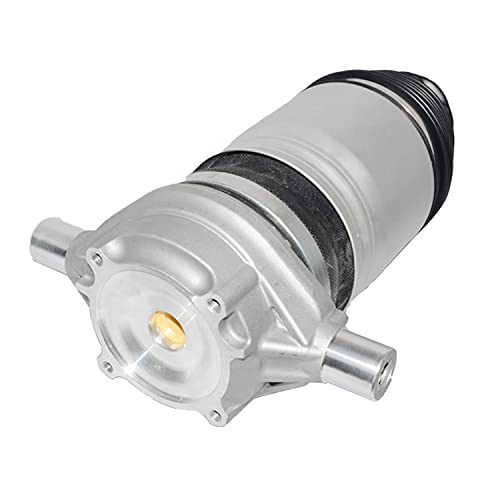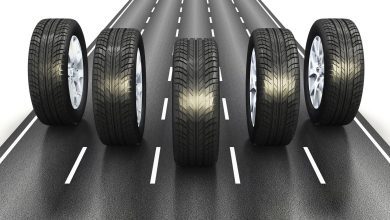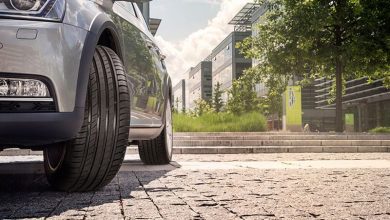What’s air spring suspension?

Air spring suspension is a significant functionality of vehicles. Automakers often use it in trucks, buses, tractor-trailers and many other heavy-loaded vehicles. Since decades ago, it has become a dispensable part for some vehicles. However, some of the vehicles come from the factory with an air suspension system installed already. But others don’t. For those vehicles without air spring suspension provided, you can often easily find one in aftermarket. An air suspension system manufacturer like vigorairride.com will give you some proper solutions.
Yet, before you decide which air spring suspension you need for your cars, you should take a look at this article. Here it gives you some information about air suspension system.

Air spring suspension
What is air spring suspension? An air suspension system is a type of vehicle suspension system that is self-contained, auto loading, and unloading. Air spring suspension does not use pressurized liquid-like hydropneumatic suspension does. Neither does it use metal springs as the conventional suspension systems do. Instead, it uses compressed air as the spring medium, as its name may indicate.
Generally speaking, an air suspension system is powered by an electric or engine-driven air pump or compressor. The compressor forces the air into a textile-reinforced rubber bellow, which is flexible. The air pressure inflates the bellows and raises the chassis from the axle. Basically, it removes metal springs (coil or leaf spring suspension), and air springs are fabricated to fit in. As a result, air pressure does the work metal springs do.
History of suspension systems
Are you wondering how air spring suspension becomes what it is now? Well, let’s give a brief introduction of air suspension history.
Back in January 1901, Archibald Sharp, a British engineer, used air suspension on bicycles. While in the same year, William W. Humphreys patented an idea – a “pneumatic spring for vehicles”. Moreover, his design consisted of two air springs.
In the year of 1946, William Bushnell Stout invented a four-wheel independent air suspension system.
Then, Americans developed an air suspension system for heavy aircraft during World Wall II. The original purpose was to save weight with compact construction.
By the late 1950s, air suspension as standard equipment on the Cadillac Eldorado Brougham.
In 1950, the rubber air spring suspension was inserted into a car’s factory coil spring. Automakers have used this system on race cars for many years. This type of air spring keeps the factory coil spring from fully compressing, and the vehicle from sagging.
Toyota Soarer developed and installed the first electronically controlled, a semi-active full air suspension in the 1900s.
In 2005, he GM H2 HUMMER featured an optional rear air suspension system. They equipped it with a dual compressor control system to support tire inflation for off-road applications.
The Tesla Model S began offering a height-adjustable air spring suspension system in 2013.
In today’s world, this tech known as air spring suspension is near-ubiquitous on high-end luxury cars. And it’s easy to find it in streetcars, trucks, and other different vehicles as well.
Components and construction of air suspension
An air spring suspension system consists of many different components. These components include an air compressor, air springs, sensors, valves, electronic control units, supply line, etc. And the sensors include height sensor, pressure sensor and temperature sensor. While valves consist of lift control valve, relief valve and return valve. Depending on models, different kinds may contain some different components.
Air spring suspension system could be designed as a 2-corner rear air suspension or a 4-corner air suspension. The air springs, either the bellows type or piston type, are mounted on the same position where the coil or leaf springs are mounted. That is to say, the air springs fit in the place of the coil or leaf springs.
How does air spring suspension work?
Before answering that question, you should know that your car would be intolerable to drive without a suspension system. Air spring suspension system not only supports the weight of your vehicle, but also keeps it steady under most conditions.
As we know, in an air suspension system, coil springs or leaf springs are swapped for pressurized flexible rubber bellows. Those bellows are air springs. There’s an air spring at each corner of the wheels for internal air pressure and ride height. By using the onboard compressor or electric pump, the air springs can easily control the air pressure. The compressor pumps air into the airbags as storage tank when vehicle load increases. And at a certain pressure, it adjusts the ride height, which provides drivers optimal ride quality and ground clearance.
As a matter of fact, how it works is kind of similar to the traditional ones. Yet, it has its own benefits for sure.
Air Suspensions come in different types
Among various kinds of air suspensions in the market, there’re many common ones. They come in different kinds based on different standards. And each type of them has its own benefits and drawbacks. Of course, and each suits different types of vehicles. Accordingly, they tend to meet different needs for customers.
Rubber bellows air springs, sleeve-style air springs and coil spring airbags are 3 of the common ones. People designed these three are mainly to better distribute the weight of the vehicle loads. Also, those springs provide better performance controls for the driver.
Or they can be bellow type air suspension, piston type air suspension, and elongated bellows air suspension. It is based on the design of air springs they use. Additionally, bellow types includes its own types: sleeve bellows, crimped or convoluted bellows, and rolling lobe bellows type.
Or there’re another two types: semi air suspension and full air suspension.
Overall, air suspensions come in different types for different cars.
Air suspension from different automakers
Well, different automakers apparently have their unique ways of addressing their own air suspension system. Here are some examples for your reference:
Airmatic (Mercedes-Benz)
Smart Air Suspension (Tesla)
Air Glide Suspension (Lincoln)
Adaptive Air suspension (Audi)
Active Air Suspension (Jaguar)
Four-C Adaptive Air Suspension (Volvo)
Active-Level Four-Corner Air Suspension (Ram)
Adaptive Variable Suspension with Adjustable Height Control (Lexus)
Active Suspension with Porsche Active Suspension Management (Porsche)
Normally, cars have suspension systems, whether it is an air suspension or a traditional suspension system. It provides you with a better vehicle ride experience. You can see if there’s a suspension system in your car. Undoubtedly, there is one to ensure you a comfortable ride experience. If there isn’t, you can always find some alternatives from vigorairride. They offer professional and considerate service before and after-sale. Go check it out if you need some help.





